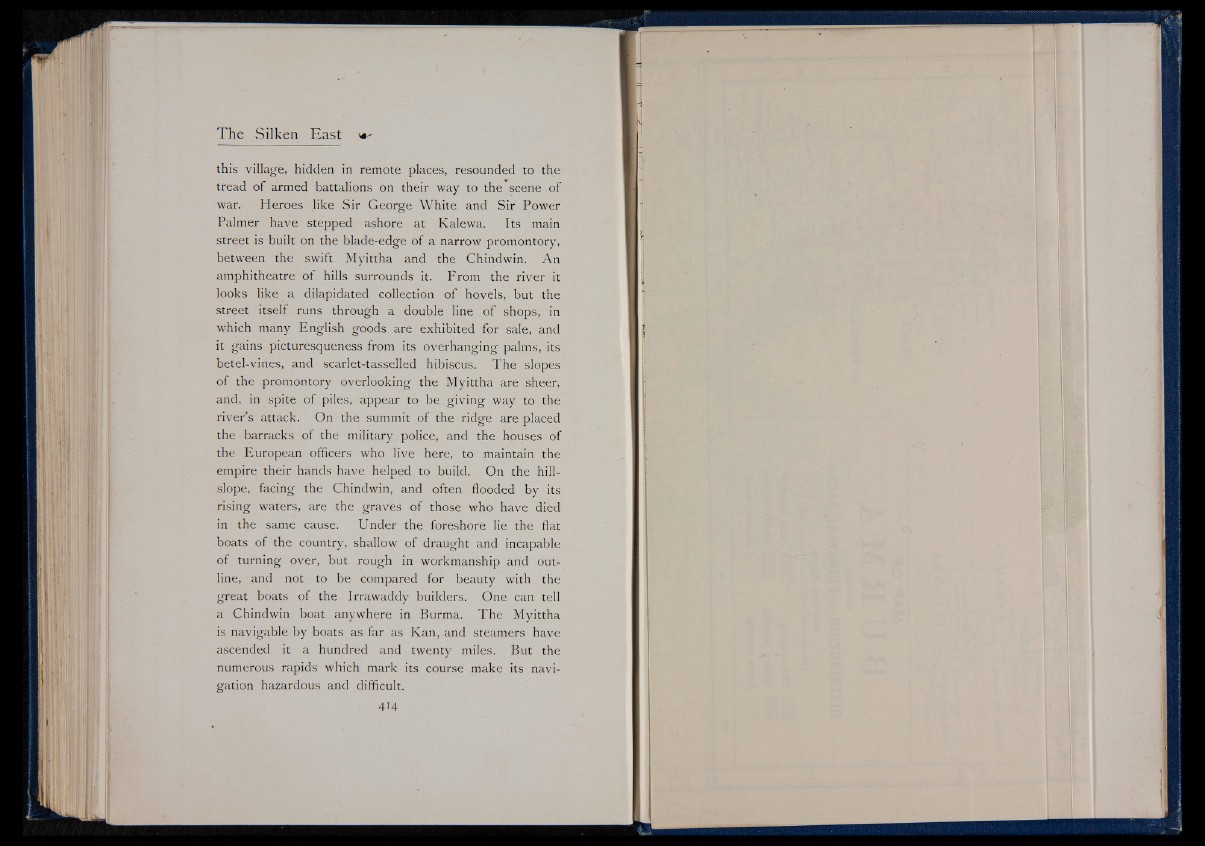
The Silken East ^
this village, hidden in remote places, resounded to the
tread of armed battalions on their way to the scene of
war. Heroes like Sir George White and Sir Power
Palmer have stepped ashore at Kalewa. Its main
street is built on the blade-edge of a narrow promontory,
between the ■ swift Myittha and the Ghindwin. An
amphitheatre of hills surrounds it. From the river it
looks like a dilapidated collection of hovels, but the
street itself runs through a double line of shops, in
which many English goods are exhibited for sale, and
it gains picturesqueness from its overhanging palms, its
betel-vines, and scarlet-tasselled hibiscus. The slopes
of the promontory overlooking the Myittha are sheer,
and, in spite of piles, appear to be giving way to the
river’s attack. On the summit of the ridge are placed
the barracks of the military police, and the houses of
the European officers who live here, to maintain the
empire their hands have helped to build. On the hill-
slope, facing the Chindwin, and often flooded by its
rising waters, are the graves of those who have died
in the same cause. Under the foreshore lie the flat
boats of the country, shallow of draught and incapable
of turning over, but rough in workmanship and outline,
and not to be compared for beauty with the
great boats of the Irrawaddy builders. One can tell
a Chindwin boat anywhere in Burma. The Myittha
is navigable by boats as far as Kan, and steamers have
ascended it a hundred and twenty miles. But the
numerous rapids which mark its course make its navigation
hazardous and difficult.
414